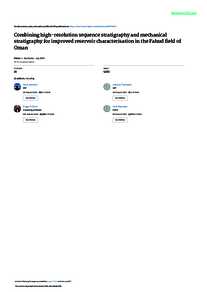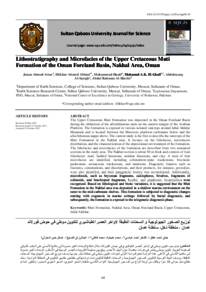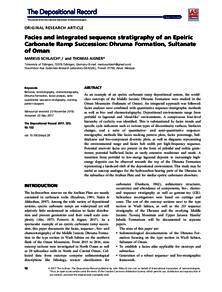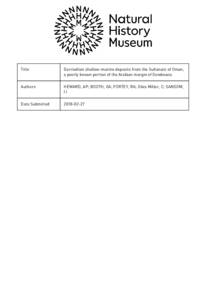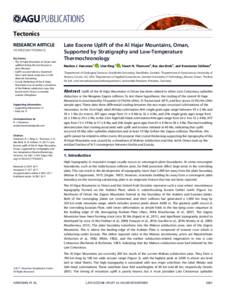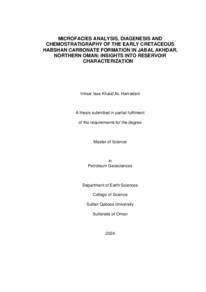وثيقة
Combining high-resolution sequence stratigraphy and mechanical stratigraphy for improved reservoir characterisation in the Fahud field of Oman.
المعرف
DOI: 10.2113/geoarabia100317
المصدر
GeoArabia. v. 10, 3, p.17-44
المساهمون
Thompson, Anthony., مؤلف
Eberli, Gregor ., مؤلف
Rawnsley, Keith., مؤلف
Roeterdink, Roeland., مؤلف
Asyee, Wenche., مؤلف
Christman, Peter. , مؤلف
Cortis, Anthony., مؤلف
Foster, Karen., مؤلف
Hitchings, Victor. , مؤلف
Kolkman, Wilhelm. , مؤلف
الدولة
Bahrain.
مكان النشر
Manama
الناشر
Gulf Petrolink.
ميلادي
2005-07-01
اللغة
الأنجليزية
الموضوع
الملخص الإنجليزي
In the Fahud field of Oman, the integration between hierarchies of sequence stratigraphic units and fracture systems has proven to be crucial to explain the distribution of flow and mechanical units. The study focused on the Upper Cretaceous, Albian to Lower Cenomanian Natihe unit (Natih Formation, Wasia Group), a 170-m-thick carbonate sequence/ reservoir, which exhibits heterogeneities in both facies and reservoir quality. Based on a core-derived high-resolution sequence stratigraphic analysis, the Natih e reservoir can be subdivided into four orders of depositional cycles (from 6th- to 3rd-order). Each cycle consists of a transgressive and regressive hemicycle with characteristic facies and rock properties. The facies and diagenetic overprint of the higher-order cycles vary according to their position within the 3rd-order sequences. Analysis of core, borehole images, seismic, tracer and production data indicate a hierarchy of fractures and faults that seems to follow the stratigraphic subdivisions. A relationship between depositional and diagenetic architecture of the cycles, and the aforementioned data, led to the identification of mechanical layering and stratigraphy within the reservoir. This finding was validated and supported by the successful history match of the three-phase production data within the dynamic model of the reservoir. The combination of sequence and mechanical stratigraphy provides a framework for the correlation of facies and mechanical units across the field. Furthermore, the facies and mechanical units are related to reservoir quality and fracture distribution for consistent upscaling into large-scale reservoir models. Through close co-operation between geologists and reservoir engineers utilising dynamic data, it was possible to determine the most appropriate scale for flow and ensure that such a scale was then used as input for dynamic modelling and for planning of the future exploitation of the Fahud field. As a result of this study, Petroleum Development Oman (PDO) has evaluated a 20% increase in risked reserves, and a 25% reduction of well costs.
ISSN
1025-6059
قالب العنصر
مقالات الدوريات

